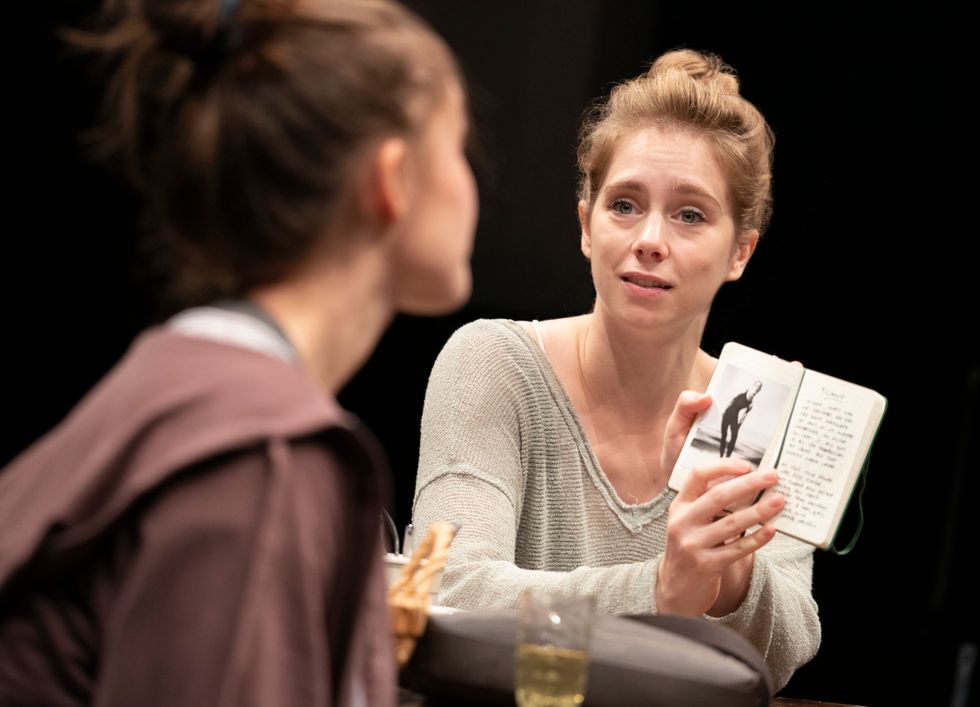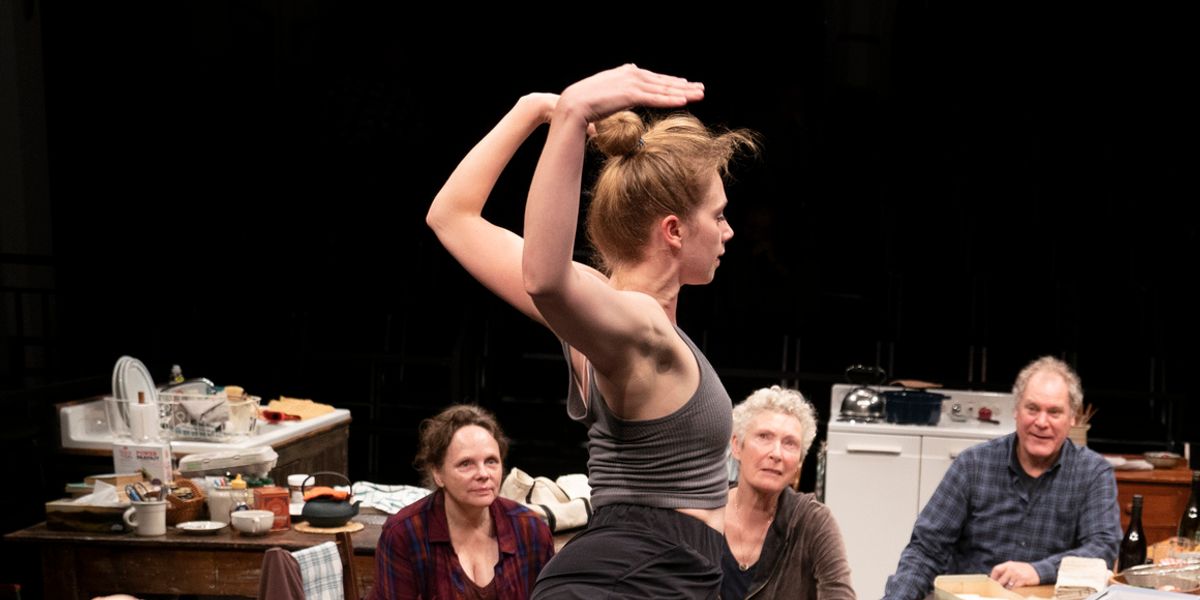How Playing A Dancer Helped This Juilliard Grad Fall Back in Love with Dance
After earning a dance degree from Juilliard and accumulating a resume of professional dance experience, Charlotte Bydwell grew tired of the professional dancer grind. “I had become encumbered by the conservatory training and the challenges of having a professional career,” she says. For the past several years, Bydwell has been focused on acting instead.
But her latest project—The Michaels, a new play at The Public Theater by writer/director Richard Nelson—has reawakened Bydwell’s relationship with dance. No, it’s not a musical, or even a dance-theater work, but a play about a fictional choreographer named Rose Michael and her family. Bydwell plays Rose’s daughter, Lucy, who is a also a dancer and choreographer.
The show has just one dance scene. But coming back to dance as Lucy Michael—instead of as Charlotte Bydwell—has helped Bydwell develop a new relationship with the art form.
“It’s been a challenge because it’s a memory of my former self,” she says. “But I feel like I have a whole new sense of joy surrounding dance that I had started to lose. I’m taking class again five or six days a week. It’s not aimless training; I’m coming back to it from the lens of having a character inside of a narrative.”
We talked to Bydwell about what it’s been like to be a dancer playing a dancer in a play:
 Joan Marcus, Courtesy The Public Theater
Joan Marcus, Courtesy The Public Theater
On Working with Sara Rudner
The dances performed in the show are modeled off work by Dan Wagoner (though, of course, they are translated to look like they are by the fictional Rose Michael.) But they were staged Sara Rudner, who Bydwell says helped the dancers make choices based on their characters: How far along they are in learning the dance, for example, or how much they know about a particular moment. “She’s so down to Earth,” says Bydwell. “She’s the most relatable rehearsal director I’ve ever worked with.”
On the Play’s Dance Insider Moments
When Bydwell received the first draft of the script, it was already loaded with dance history, she says, thanks to Nelson’s obsessive research. (For example, Bydwell learned that so many of Merce Cunningham’s dances are for four or five performers because that’s how many people he could fit in his station wagon.)
But after sitting in on two weeks of dance rehearsals, Nelson revised the script to include even more insider-y tidbits, incorporating real notes Rudner gave the dancers as well as the dancers’ quirky habits, like putting two elastics in their hair for full runs or fiddling with their costumes before going onstage. Some stories also came from lighting designer Jennifer Tipton, who has designed dances by Wagoner, Paul Taylor, Twyla Tharp and more, and from Rudner, who “can add that extra detail that’s not written about, the darker side that someone might not want to admit to,” says Bydwell.
 Joan Marcus, Courtesy The Public Theater
Joan Marcus, Courtesy The Public Theater
On Finding Joy in Dance Again
Dancing as her character—not as herself—has helped Bydwell rethink her relationship to class. “Every time I take a dance class I’m doing it because I want my body to be in shape for the role,” she says. “But I’m also the character taking class. It offers me a moment of reprieve. Class for me has always held the heaviness of corrections. When I am able to remember that I’m not Charlotte right now, I’m Lucy and those demons are not mine, they’re hers, it can be a creative moment.”
On the Play’s Judson Aesthetic
Bydwell describes Rose Michael as a postmodern choreographer from the 70s in the vein of Trisha Brown, Anna Halprin and Yvonne Rainer. The play’s sensibilities cleverly match the aesthetic these choreographers were working with: “Anything about life could be dance and could be elevated to the status of revealing something to the audience,” says Bydwell. “Richard’s work has long been about doing the same thing with theater; just putting life on the stage. He’s looking back at those people that were doing what he’s doing now. It’s pretty amazing that he knew to go to that time.”
 Joan Marcus, Courtesy The Public Theater
Joan Marcus, Courtesy The Public Theater
On the Meta-ness of Playing a Dancer
While playing a role that’s so close to home could pose complications for an actor trying to forge a character, Bydwell has leaned into her similarities to Lucy Michael. “We have merged,” she says. “I came from a strong ballet background and had been focused on ballet before going to Juilliard where I got modern dance training. My ballet is always the first thing that shines. In the play, Rose says to my father, ‘We shouldn’t have let her do all that ballet.’ My struggle has fully been absorbed into Lucy Michael’s struggle. It means I don’t have to push myself to be excellent yet, I can be in progress.”
The dance scene in the play is a work-in-progress, too: Lucy and another dancer, played by Matilda Sakamoto, are in the kitchen, showing Rose what they’ve been working on for an upcoming retrospective of her work: “The dances in the play aren’t performed as they would be in a recital,” Bydwell says. “We’re getting notes in real time. It has to still be breathing.”




